Cee’s Fun Foto Challenge: Street Lamps or Outdoor Lighting
A couple of slide shows
Cee’s Fun Foto Challenge: Street Lamps or Outdoor Lighting
A couple of slide shows
Denzils Nature Challenge #22: Tree Bark
I don’t really know where to start as I have so many photos of bark. Yes I am a bit weird when it comes to what’s around me and the unusual I find when I am travelling else where.
Here is a number of photos from my media folder of trees from years ago. I found that bark is bark and to have bark change on a tree is evolution. If it has happened in my lifetime it’s really sneaky and subtle.
I just realised that some of these are unnamed so I might have to guess.
This could be a Corkwood or a Foambark Tree

A Plane Tree Found nearly all over the world

A native Fig Tree, maybe a Port Jackson Fig

When there is a lot of rain, some trees produce foam.
“This occurs when rainwater dissolves chemicals from the tree bark as it flows down the stem of the tree. This changes the surface tension of the water so that when it drips down towards the base of the tree, the air is introduced due to the turbulence of the water, and foam is formed because of the altered surface tension.”
This is foam coning from a Bloodwood Tree
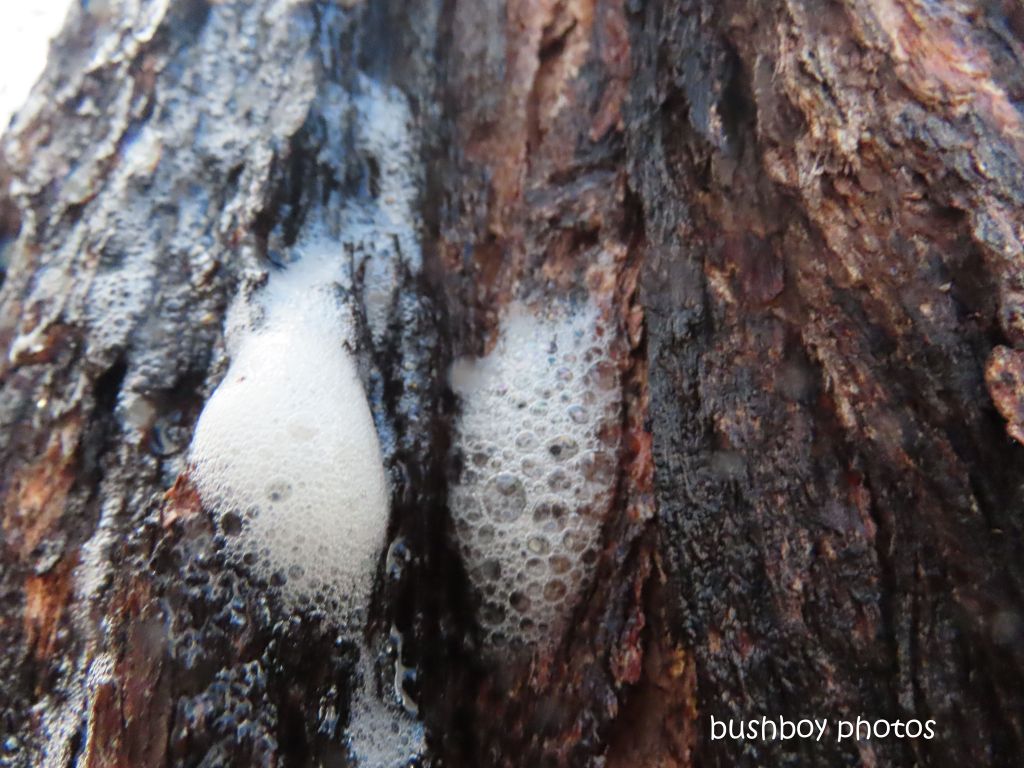
Bloodwood is a funny name. It comes from the tree exuding a red sap which runs down the bark, giving it a blood like stain. I wrote about the tree a while ago and can be found here if you are interested

The bark of a Red Ironbark is quite rough with fissures running up and down the length of the tree. The new growth on the ends of the branches have a smooth bark. Ironbarks too do exude a small amount of sap. This sap was used by our First People as a glue. Rub it between your hands until it softens and fasten the stone axe head to the handle

Everyone loves Scribbly Gums. The tracks are made by a beetle larvae

There is a number of trees that shed their bark in strips. On my place it is the Grey Gums and the ones like this one below, the Forest Red Gums. These bark strips had lots of uses as well like making baskets
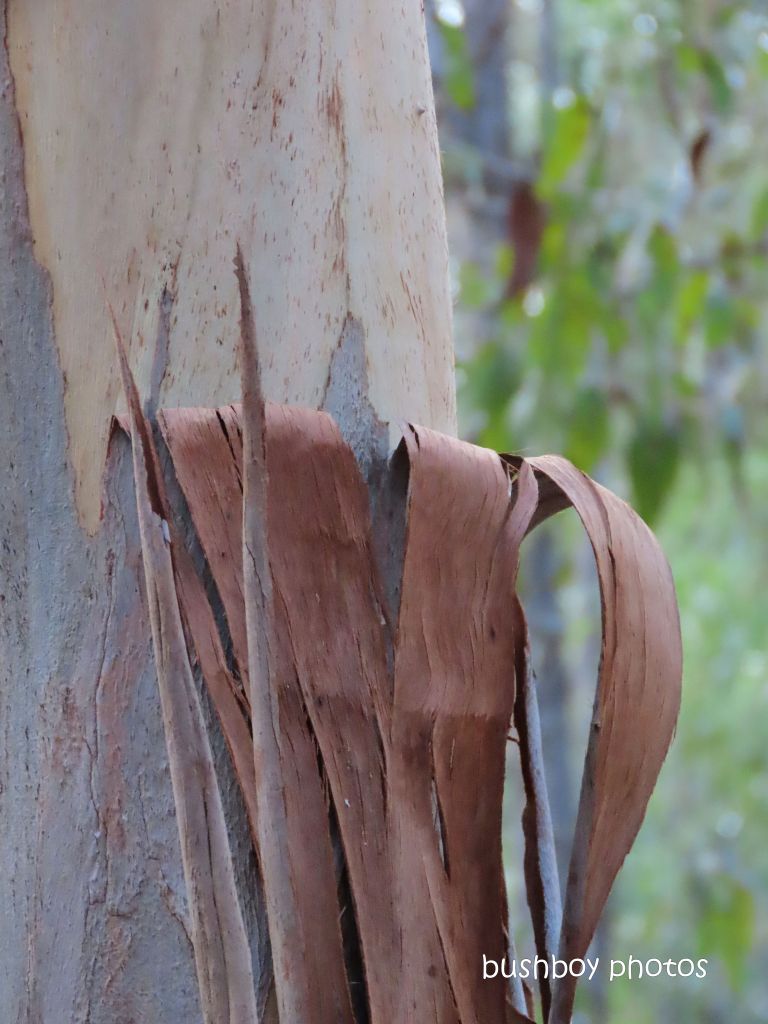
This is a spot the difference with Spotted Gums. When Spotted Gums are dry they are quite abstract.

But when Spotted Gums get wet a transformation takes place

Getting wet after a fire is another world
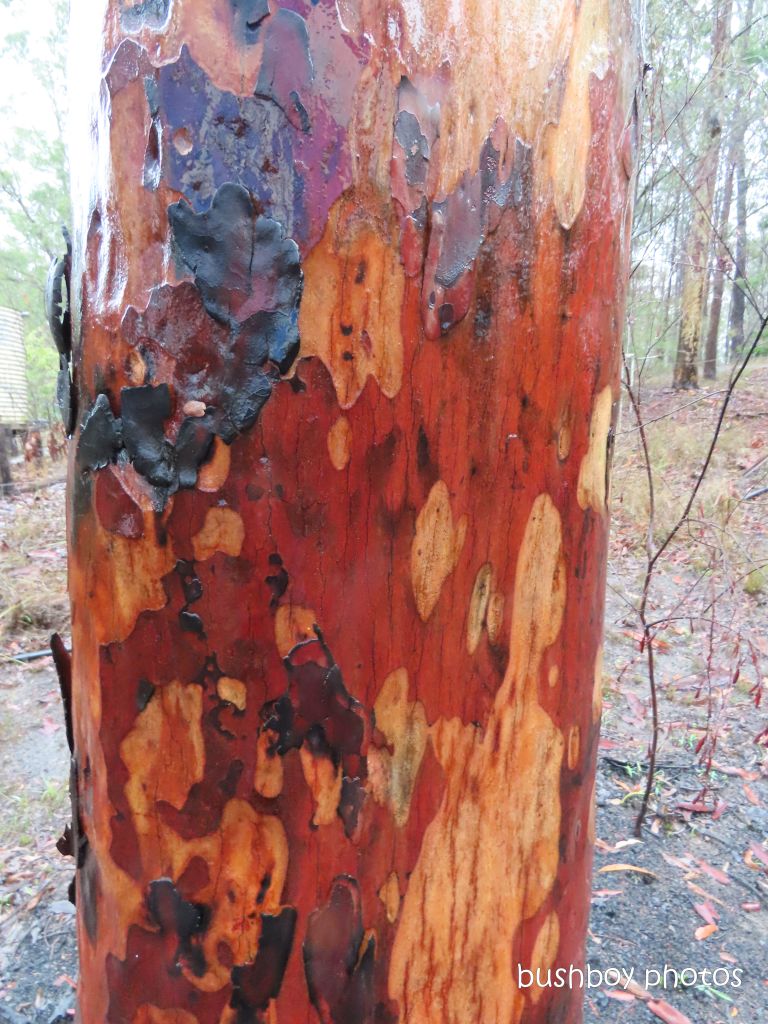
Spotted Gums are resilient trees. Originally the fencing wire would have been wrapped around the tree, using it for a strainer post. Those two post either side are the replacement strainer posts

I cannot find the name of this tree. The old bark strips off revealing a stunning orange new layer which yellows over time

Another type of tree are the fibrous bark trees. I have around five different species that have a fibrous bark. When fire gets onto this type of bark is flash burns and runs up the tree only singing the bark, saving the wood beneath.
This Tallowwood has had an accident. Another tree has crashed down, shaving the side of this tree, perhaps knocking off a branch. The bark goes into action forming a paper like surface that get thicker, sealing over the wound. The tree will have a scar like this one forever

G’day, just seeing if you kept up and got this far. Thanks for having a read. A Bottle Tree

Lens-Artists Challenge #259: Unbound
Always freely
drifting
clouds
Our Moon
always there
connected
but free
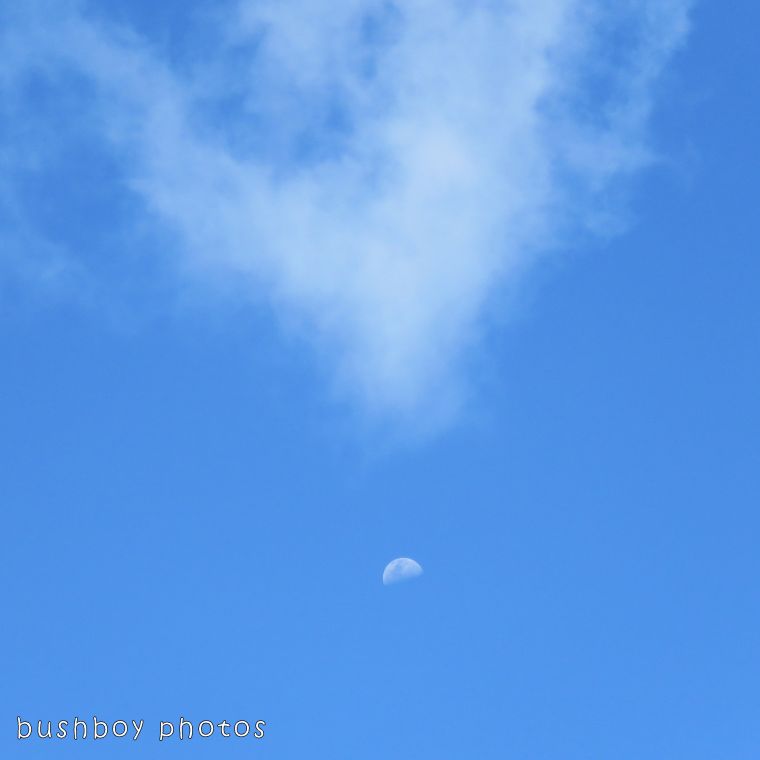
Floating
pulled
this way
and that
feel the wind
freedom
but tethered

Here I am
just floating
colours
see me
go by
freedom
temporary

Always flying
soaring
wheeling in
air currents
the sky
home
freedom

IJ’s Bird of the Week Invitation XXII
Yes, that’s what Eastern Yellow Robins are; small, grey and yellow but I must
also add cute. As the name suggests they live on the east coast of Australia.

They are always on the alert for any insect or grub that moves in the garden,
but prefer spiders, then it’s a quick flash down and up to the branch to eat dinner.

The yellow is quite stunning. Having a yellow flash through the garden lets me
know there’s an Eastern Yellow Robin around

The grey feathers are great as well with the tufts of yellow poking through here
and there. Their call is rather repetitive so I also know when one is around.
I tested this sound bit so I hope it works for everyone
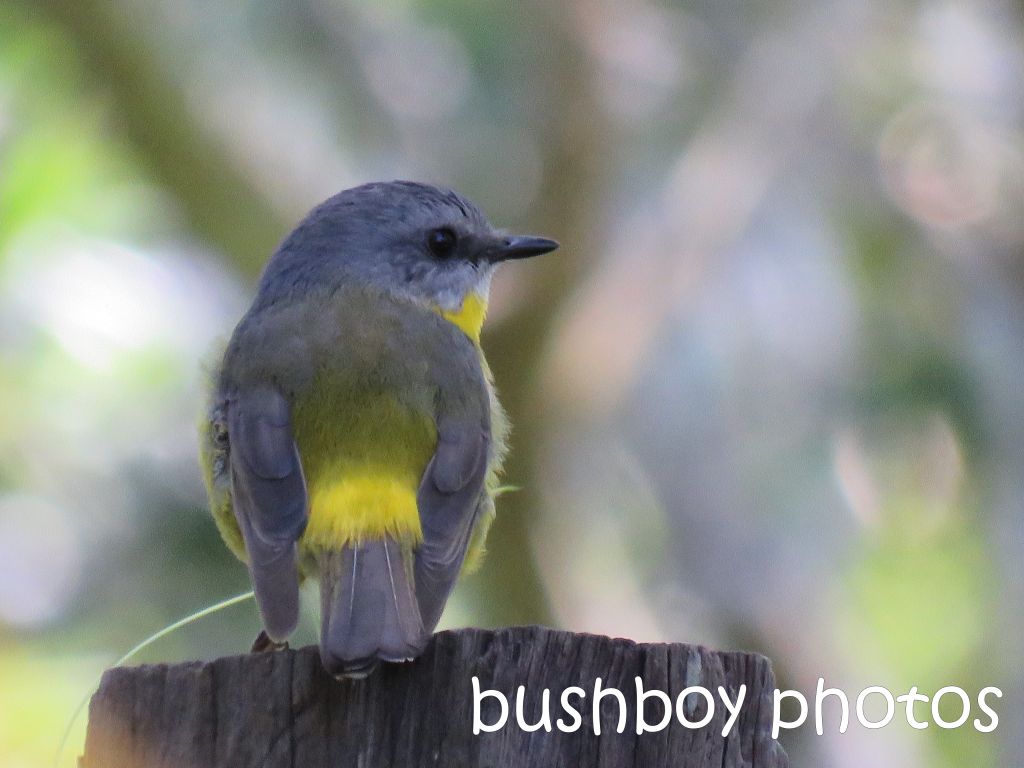
One of the Eastern Yellow Robins favourite places to land is on the side of trees
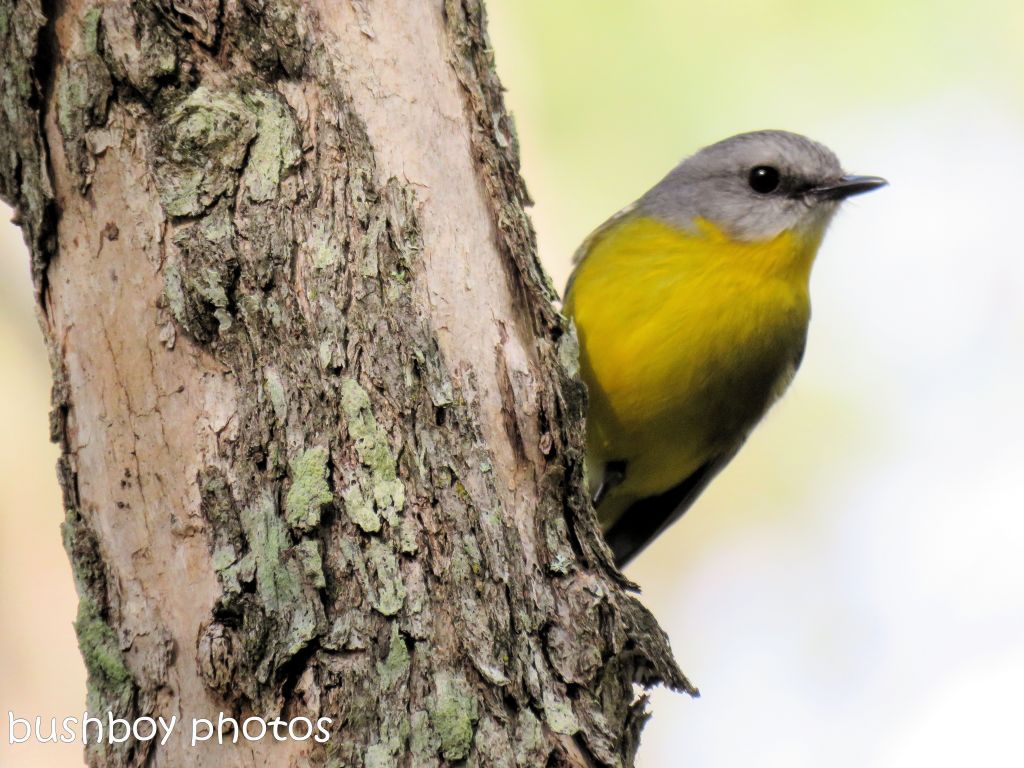
Eastern Yellow Robins also look cute when they are wet

They are good parents and make very comfortable nests for the three clutches of
eggs they have in most years. The female builds the nest and incubates the eggs.
The young are raised by both parents and sometimes nearby robins will help out.
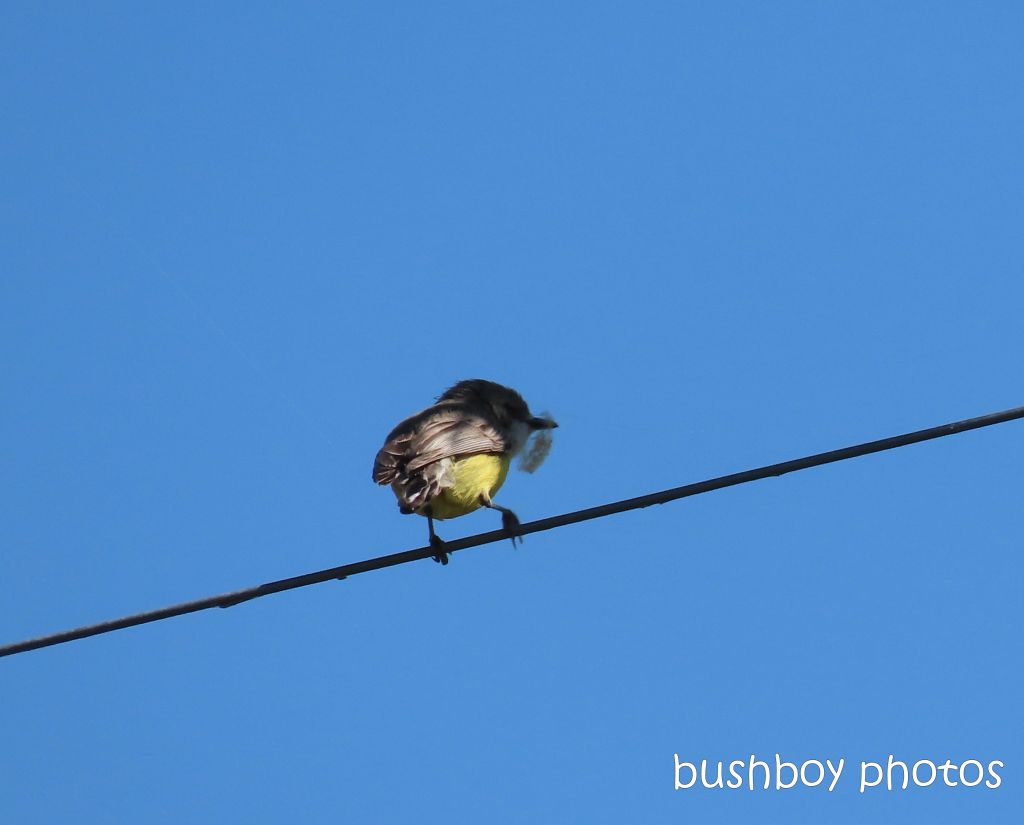
Eastern Yellow Robins are quite friendly and like living around people. They enjoy
gardens as they always have food in there somewhere and if they are lucky, a bird
bath or somewhere to at least get a drink.

Eastern Yellow Robins are one of my all time favourite birds


Hughs’ Wordless Wednesday
Leannes’ Monochrome Madness
I was also made aware that Wordless Wednesday has been going on a Blogspot site for quite a while so in fairness I am going to link to their Wordless Wednesday as well
The world as I see it
Just another WordPress.com site
ich zeige euch meine stadt wie ich sie sehe
Strolling around SE Michigan & sending joy in the journey.
Joyful moments... Playful insights... Beautiful gems... & Starry Steps Prints
Exploring my Thoughts. Finding Myself. Searching for More.
A photographic journey.
WordPress & Blogging tips, flash fiction, photography and lots more!
Careening through life and learning stuff
Inspired by Good Food
Playful or dreamy insights & beautiful gems... by Nicole Sara
Simply Photography
Nature, history, & culture in Bend & beyond
Tripping the world, slowly
Travel to Live, Live to Travel
To See a World in a Grain of Sand...
Roaming, at home and abroad
the world as seen by different artists
...out of a digital shoebox